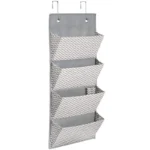Introduction
Understanding the intricate details of business financing tools is crucial for every entrepreneur looking to maintain or enhance their company’s cash flow. Among the myriad of options available, low-interest credit cards and Net 30 accounts stand out as prominent choices. Each financing method comes with its unique advantages and disadvantages, and the decision to use one over the other—or even both—can significantly impact your business’s financial health. This blog delves into the specifics of low-interest business credit cards and Net 30 accounts, exploring how they operate, their benefits and drawbacks, and providing guidance on making the most strategic choice for your business needs. Whether you’re financing daily operations, managing unforeseen expenses, or planning for future growth, understanding these tools is essential for making informed financial decisions and steering your business towards long-term success.
Understanding Low-Interest Business Credit Cards

Low-interest business credit cards are financial instruments specifically geared toward meeting the various needs of a business. Such cards are not just about borrowing; they offer a blend of flexibility, potential rewards, and the opportunity to build a solid business credit profile. Let’s dive deeper into these aspects.
The Concept of Revolving Credit
A distinguishing feature of business credit cards is their revolving credit nature. Once approved, you’re allocated a spending limit, which is determined by your business’s financial health and creditworthiness. This limit represents the maximum amount you can charge on your card. The revolving aspect comes into play as you make payments, thus replenishing the available credit. It’s a continuous cycle that allows for repeated borrowing, provided the balance is managed responsibly.
Analyzing The Interest Factor and APR
The pivotal draw of low-interest credit cards is their capability to minimize borrowing costs. The APR, or Annual Percentage Rate, represents the interest applied to any balances carried beyond the payment due date. Many cards feature 0% APR introductory periods, which temporarily halt interest accumulation on purchases. However, it’s imperative to understand the standard APR that applies post-introductory offer to ensure the card aligns with your financial strategy.
Benefits of Rewards Programs
Business credit cards frequently come with rewards programs, a significant appeal for many businesses. These programs might offer cash back, points for redemption against travel or merchandise, or business-specific perks. It’s essential to assess whether a card’s rewards program complements your spending habits and if the perks justify any associated annual fees, hence optimizing the card’s value for your business.
Impact on Building Business Credit
Prudent management of a business credit card can significantly enhance your business’s credit score. Timely bill payments and maintaining a low credit utilization ratio (your balance relative to the credit limit) are crucial behaviors. A strong business credit history, fostered through proper credit card use, opens doors to more favorable borrowing terms down the line.
Exploring Net 30 Accounts
Net 30 accounts represent a form of short-term, vendor-extended credit that provides a unique set of benefits for managing business finances. Unlike revolving credit facilities, Net 30 accounts operate on fixed payment terms, adding another layer to a business’s financial toolkit.
The Basics of 30-Day Payment Terms
Traditionally, Net 30 terms imply that the full payment for goods or services received from a vendor is due within 30 days of the invoice date. This setup is akin to an interest-free short-term loan, granted that the invoice is paid within the stipulated 30-day period. The absence of interest on these accounts, if settled on time, makes them an attractive option for managing cash flow while maintaining operational liquidity.
Vendor-Specific Nature of Net 30 Accounts
It’s crucial to acknowledge that Net 30 terms are not universally offered; they are at the discretion of individual vendors. This means businesses can only benefit from such terms where vendors have explicitly made them available. The variability highlights the importance of understanding and negotiating payment terms with suppliers to align with your financial management strategy.
Cost Considerations and Early Payment Discounts
While the primary allure of Net 30 accounts is the potential for interest-free financing, there’s more to the picture. Some vendors incentivize early payment with discounts, which can further reduce procurement costs. However, it’s also important to be wary of late payment fees or interest, as these can negate the benefits of Net 30 terms. Thus, weighing the cost implications of these terms is essential for effective financial management.
Credit Building Through Net 30 Accounts
Like business credit cards, Net 30 accounts can play a role in strengthening a business’s credit profile. Though not all vendors report payment history to credit bureaus, those that do provide an avenue for demonstrating fiscal responsibility and reliability. On-time payments under Net 30 arrangements can enhance your business’s creditworthiness, augmenting your ability to secure future financing on favorable terms.
In conclusion, both low-interest credit cards and Net 30 accounts are integral components of a robust business financing strategy. While they serve different functions and offer unique advantages, understanding how to leverage each can significantly contribute to a business’s financial health and growth potential. By making informed choices, businesses can optimize their financing tools, build a solid credit foundation, and navigate the complexities of cash flow management with greater confidence and efficiency.
Comparing and Contrasting Low-Interest Business Credit Cards and Net 30 Accounts

Understanding the differences between low-interest business credit cards and Net 30 accounts, as well as where they overlap, is crucial for making informed decisions about your business financing strategy. This section explores these aspects through various lenses.
Use Flexibility and Interest Implications
Both low-interest credit cards and Net 30 accounts provide unique benefits when it comes to use flexibility and interest implications. Low-interest credit cards offer a revolving line of credit, allowing businesses to make purchases up to a certain limit and pay the balance over time, with interest applying to any balances not paid by the due date. This flexibility is useful for a wide variety of expenses, from day-to-day operations to emergency costs.
In contrast, Net 30 accounts are specific to vendors that offer them and typically involve no interest if the invoice is paid within 30 days. This makes Net 30 an attractive option for businesses that can pay within this period, essentially providing an interest-free loan. However, unlike credit cards, Net 30 terms are not a catch-all solution and can only be used at specific vendors that offer this payment term.
Rewards Versus No Direct Rewards
Reward programs are a significant draw for low-interest business credit cards. Many cards offer cash back, travel rewards, points redeemable for merchandise or services, and more. These programs can provide additional value that can offset the cost of card ownership, especially if these rewards align with the business’s spending patterns. On the contrary, Net 30 accounts generally do not come with direct reward programs. The primary financial benefit of using Net 30 terms is the ability to defer payment for 30 days without incurring interest, rather than earning rewards on the purchases made.
Credit Impact of Each Option
Both low-interest business credit cards and Net 30 accounts have the potential to impact your business credit profile, albeit in slightly different ways. Responsible usage of business credit cards, such as timely payments and maintaining a low credit utilization ratio, can positively affect your business credit score. Consistent, on-time payments show lenders and credit bureaus that you’re a low-risk borrower, potentially leading to better borrowing terms in the future.
Net 30 accounts also offer the opportunity to build business credit, assuming the vendor reports to business credit bureaus. Like credit card payments, timely payments to vendors under Net 30 terms demonstrate financial reliability. However, not all vendors report to credit bureaus, so the impact of Net 30 accounts on your business credit may vary.
Strategic Use of Financing Options
Making the most of low-interest business credit cards and Net 30 accounts involves understanding their unique advantages and applying them strategically to your business’s financing needs.
Effective Utilization of Net 30 Accounts
Net 30 accounts are best utilized for planned purchases, especially when your business can comfortably pay the invoice within 30 days. Leveraging these accounts for larger purchases can save on interest expenses, making them an excellent tool for managing cash flow more effectively. Additionally, using Net 30 consistently with vendors that offer early payment discounts can further reduce costs. It’s crucial, however, to maintain a strong record of on-time payments, as late payments may negate the benefits of Net 30 through fees or interest penalties.
Maximizing Benefits of Low-Interest Business Credit Cards
Low-interest business credit cards shine in situations requiring flexibility – whether it’s for unexpected expenses, cash flow management, or taking advantage of time-sensitive opportunities. Selecting a card with a rewards program that matches your business spending can also amplify the benefits, turning regular expenses into valuable rewards. For significant purchases or investments, leveraging a card’s introductory 0% APR period allows for spreading out payments without accruing interest, offering financial breathing room. It’s essential to balance the use of these cards, mindful of your business’s ability to pay off the balance and the impact on your credit utilization ratio.
A balanced approach, leveraging the strength of each financing option when it suits your business’s specific situation, optimizes your financial flexibility and health. Staying diligent about managing balances, tracking payments, and aligning with your cash flow strategy will empower your business to thrive.
Important Considerations
When navigating through the options of low-interest credit cards and Net 30 accounts for business financing, there are vital considerations to keep in mind. These considerations ensure you choose tools that align with your financial goals and operational needs effectively.
Assessing Creditworthiness and Annual Fees
One of the initial steps in considering low-interest business credit cards is evaluating your business’s creditworthiness. Creditors use this as a measure of reliability in managing credit, which in turn influences the interest rates you’re eligible for and your credit limit. It’s crucial to maintain a good credit score, as it can significantly reduce borrowing costs over time.
Moreover, many business credit cards come with annual fees. While these fees might be justified by benefits such as cashback rewards, travel points, or other perks, it’s essential to assess if the rewards genuinely offset the costs. Particularly, for businesses that may not take full advantage of the rewards offered, the annual fee could represent an unnecessary expense rather than a benefit.
Maintaining a Responsible Credit Utilization Ratio
Another critical aspect of using business credit cards is maintaining a responsible credit utilization ratio. This ratio, representing the amount of credit you use compared to your credit limit, significantly impacts your credit score. High credit utilization can be perceived as financial distress, negatively affecting your creditworthiness. It’s generally advised to keep the utilization ratio below 30%, demonstrating responsible credit management and improving your credit score.
A low credit utilization ratio not only benefits your credit score but also ensures that you have sufficient credit available for unforeseen expenses or opportunities that may arise, providing a safety net and financial flexibility for your business.
A Combined Strategy for Optimal Cash Flow

Integrating low-interest credit cards and Net 30 accounts into your financial strategy allows for greater flexibility and optimization of cash flow. Implementing a combined approach requires understanding how to prioritize these tools for different business needs and managing their use effectively.
Prioritizing Financing Tools for Different Needs
Determining when to use low-interest credit cards versus Net 30 accounts is crucial for managing your financial resources efficiently. For unexpected expenses or when utilizing rewards programs, a low-interest credit card could be the best option. These cards provide the flexibility of immediate purchasing power and the ability to earn rewards that can offset some costs.
On the other hand, for predictable, planned purchases, especially with vendors that offer Net 30 terms, leveraging these accounts can be more advantageous. The interest-free period allows for better cash flow management, with the possibility of early payment discounts further reducing costs. Prioritizing Net 30 for such transactions while reserving credit cards for other types of expenses can help maximize financial benefits and maintain a healthy cash flow.
Organizational Strategies for Managing Payments and Due Dates
Effectively managing payment schedules and due dates is instrumental in optimizing the benefits of both low-interest credit cards and Net 30 accounts. Late payments can result in fees, interest charges, and negative impacts on your credit score, undermining the advantages of these financial tools.
To prevent these issues, consider the following strategies:
– Set up automated reminders or use accounting software that alerts you of upcoming payments.
– Allocate specific times each month to review and manage financial obligations.
– Consider consolidating due dates with creditors or vendors if possible to streamline payment processes.
By keeping organized and proactive in managing payments and due dates, you can ensure timely settlements, avoid unnecessary costs, and maintain a positive credit standing, facilitating better financial health for your business.
In conclusion, while both low-interest credit cards and Net 30 accounts offer distinct advantages for business financing, the key to leveraging them effectively lies in making informed choices based on your business’s specific needs, maintaining good financial practices, and employing a strategic approach to maximize benefits while minimizing costs.
Conclusion: Mastering Business Financing for Success
Successfully navigating the complexities of business financing ensures the stability and growth of your company. Low-interest credit cards and Net 30 accounts, each with their distinct advantages, are pivotal tools in this journey. Here’s a quick recap of the essential strategies for employing these financial mechanisms effectively:
– Flexibility and Rewards Through Low-Interest Credit Cards: These cards offer the dual benefits of managing unexpected expenses and taking advantage of rewards programs. By selecting cards with low interest rates and beneficial rewards that align with your business activities, you can mitigate the costs of borrowing while potentially earning valuable perks.
– Interest-Free Financing with Net 30 Accounts: Net 30 accounts shine when used for predictable, planned purchases. The ability to defer payment without incurring interest charges can significantly aid in managing cash flow, and when payment is made promptly, it can even help build a strong credit profile.
– Building a Strong Business Credit Profile: Both options, when managed responsibly, can bolster your business credit. This is vital for securing more favorable terms on future loans and credit lines, reducing the cost of financing down the line.
In sum, both low-interest credit cards and Net 30 accounts are indispensable tools in the arsenal of a savvy business owner. By understanding when and how to use these financial instruments, you can ensure a steady stream of working capital, build a strong credit reputation, and pave the way for your business’s long-term success. Remember, the key is not just in choosing one financing option over the other but in mastering the strategic use of both to navigate the financial demands of your business.












